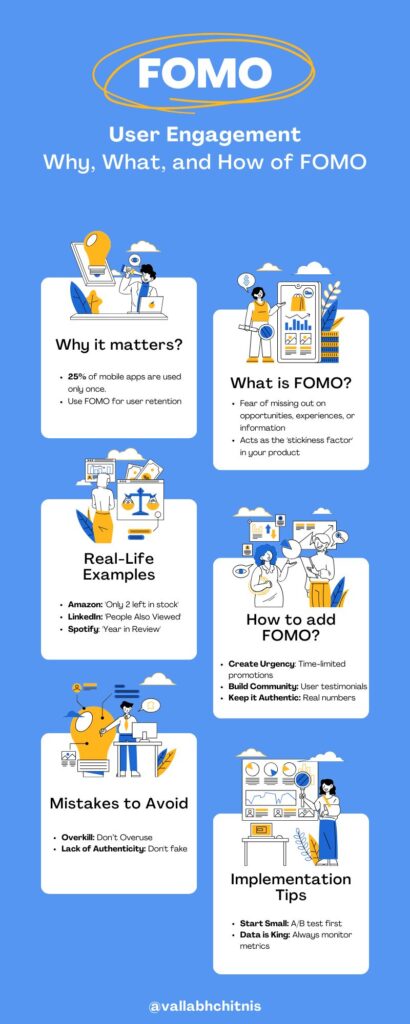Ever felt the itch to click just because something is ‘Limited Time Only’? That is FOMO – Fear of Missing Out.
-> Why It Matters?
User Engagement can be the Achilles Heel for any Product Manager.
According to Statista, 25% of mobile apps get dumped after just one use. How do you create the FOMO, a human psychology marvel, to keep users coming back?
-> What is FOMO?
FOMO taps into our natural fear of missing out on opportunities, experiences, or information. It is a psychological lever you can pull to influence user behaviour subtly. Consider it as “Fevicol” that glues users to the product.
-> Real-Life FOMO Examples
Amazon: ‘Only 2 left in stock’ creates a now-or-never urgency.
LinkedIn: The ‘People Also Viewed’ feature entices you to explore more profiles, making you wonder what you might miss if you don’t.
Spotify: Their ‘Year in Review’ feature nudges users to share their listening habits. It is only available for a short duration.
-> How to Add FOMO?
- Create Urgency: Time-limited promotions or low-stock alerts can prompt snap decisions.
- Build Community: User testimonials or a ‘Most Popular Choices’ section can induce a sense of belonging.
- Keep it Authentic: Always use real numbers and offers. A misled user is a lost user.
-> Mistakes to Avoid
- Overkill: FOMO loses its charm if overused. Your users will notice and may find it annoying.
- Lack of Authenticity: If your ‘limited offer’ is always available, you risk losing user trust.
-> Implementation Tips
- Run A/B Tests: Test your FOMO elements on a segment of your user base before a full rollout.
- Monitor Metrics: Monitor engagement and retention rates to measure the actual impact.
FOMO can be harnessed for good. It is not just a psychological buzzword but a practical tool for increasing user engagement. Use it wisely and ethically for the best results.
